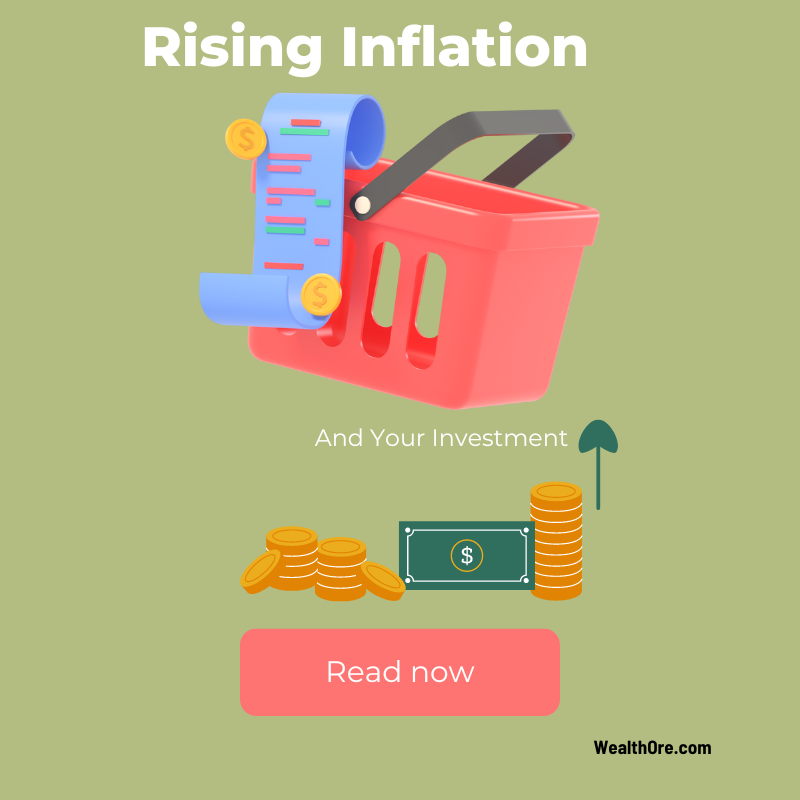Have you ever found yourself worrying about your investments during market downturns? Market volatility can be stressful for any investor, but having the right strategies in place can help you stay calm and focused. In this post, we’ll explore strategies for staying calm during market downturns, the importance of a long-term vs. short-term investing mindset, and historical examples of market recoveries.
What is Market Volatility?

Market volatility refers to the frequency and extent of price movements in the financial markets. It is a measure of how much the prices of assets, such as stocks, bonds, or commodities, fluctuate over time. Volatility can be caused by various factors, including economic data releases, geopolitical events, changes in interest rates, and company-specific news.
Key Characteristics of Market Volatility
- Price Swings: Volatile markets experience significant price swings, both upwards and downwards, within short periods.
- Uncertainty: High volatility often reflects uncertainty and investor sentiment. When markets are volatile, investors may react emotionally, leading to rapid buying or selling.
- Risk and Opportunity: While volatility increases risk, it also creates opportunities for investors to buy undervalued assets or sell overvalued ones.
Strategies for Staying Calm During Market Downturns
1. Stay Informed but Avoid Overreacting
- Stay Informed: Keeping up with market news and trends is important, but constantly checking your investments can lead to unnecessary stress.
- Avoid Overreacting: Markets naturally fluctuate. It’s crucial to avoid making impulsive decisions based on short-term movements. Instead, focus on the fundamentals of your investments and your long-term strategy.
2. Diversify Your Portfolio
- Spread Your Risk: Diversification can help reduce risk. By spreading your investments across different asset classes, sectors, and regions, you can mitigate the impact of a downturn in any one area.
- Consider Different Assets: Include stocks, bonds, real estate, and other assets in your portfolio to balance risk and return.
3. Maintain an Emergency Fund
- Financial Cushion: Having an emergency fund ensures you have cash available for unexpected expenses or market downturns. This can prevent you from needing to sell investments at a loss.
- Peace of Mind: Knowing you have a financial safety net can help reduce anxiety during volatile periods.
4. Stick to Your Investment Plan
- Set Clear Goals: Define your investment goals and create a plan to achieve them. This plan should include your risk tolerance, time horizon, and investment strategy.
- Rebalance Regularly: Periodically review and rebalance your portfolio to ensure it remains aligned with your goals and risk tolerance.
Long-Term vs. Short-Term Investing Mindset
Long-Term Investing
- Focus on the Big Picture: Long-term investors look beyond short-term volatility and focus on the overall growth potential of their investments.
- Compounding Returns: By staying invested for the long term, you can benefit from compounding returns, where your investment earnings generate their own earnings.
- Less Stress: Long-term investors are less likely to panic during market downturns because they understand that volatility is a natural part of the investment journey.
Short-Term Investing
- Quick Gains and Losses: Short-term investing involves taking advantage of market fluctuations to make quick profits. This approach can be profitable but also carries higher risk.
- Active Management: Short-term investors need to actively monitor the market and be prepared to make rapid decisions, which can be stressful and time-consuming.
- Market Timing: Successfully timing the market is challenging, and even experienced investors can struggle to predict short-term movements accurately.
Historical Examples of Market Recoveries
Understanding historical market recoveries can provide perspective and reassurance during volatile periods. Here are a few notable examples:
1. The Great Depression (1929-1939)
- Market Crash: The stock market crash of 1929 led to a severe economic downturn. However, by the early 1940s, the market began to recover, and those who remained invested eventually saw substantial gains.
- Recovery Lessons: The recovery from the Great Depression demonstrates the resilience of the market and the importance of staying invested during tough times.
2. The Dot-Com Bubble (2000-2002)
- Tech Collapse: The early 2000s saw a dramatic rise and fall in tech stocks. The market took a hit, but it began to recover by 2003.
- Investor Takeaway: The dot-com bubble highlights the risks of speculative investing but also shows that diversified portfolios can withstand sector-specific downturns.
3. The Global Financial Crisis (2007-2009)
- Market Meltdown: The financial crisis led to a significant market decline. However, by 2013, the market had recovered and reached new highs.
- Long-Term Perspective: This recovery underscores the importance of a long-term investing mindset and the market’s ability to rebound from severe downturns.
Stay Informed
Keep up with market trends, economic news, and changes in the investment landscape. Staying informed helps you make timely decisions and seize opportunities, ensuring the continued effectiveness of your diversified investment portfolio. For more insights, check out our latest articles on WealthOre. Additionally, you can find reliable data and analysis on platforms like Morningstar and Investopedia.
Conclusion
Market volatility is a natural part of investing, but with the right strategies and mindset, you can navigate these fluctuations successfully. By staying informed, diversifying your portfolio, maintaining an emergency fund, and sticking to your investment plan, you can remain calm during downturns and keep your long-term goals in sight. How do you handle market volatility, and what strategies have worked best for you? Share your thoughts in the comments below!







